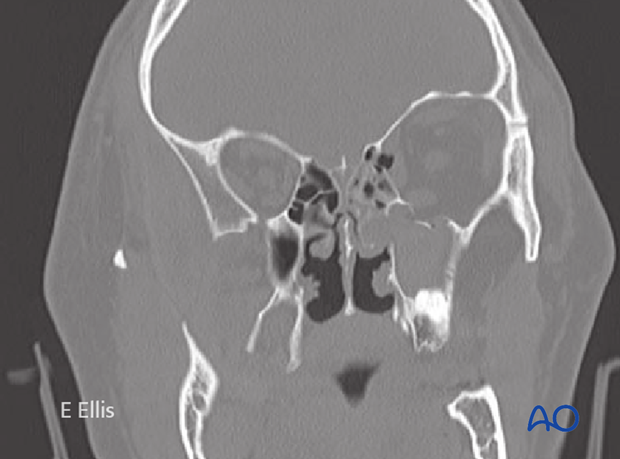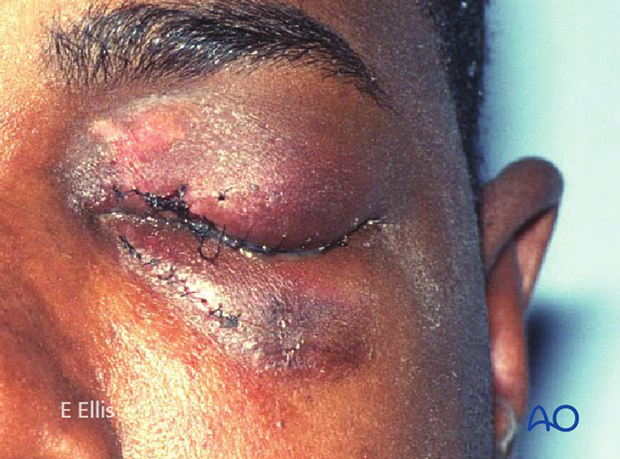Observation
1. Indication
Observation may be indicated in slightly or non-dislocated orbital wall fractures without disturbance of eye mobility, or in cases where patient condition does not allow surgical intervention.
The decision to observe or to perform surgery is based on thorough evaluation; correction of a potential secondary deformity is challenging.
Observation may also be considered in a significant orbital fracture of the only seeing eye.

2. Follow-up
Due to periorbital edema following trauma, the majority of patients may initially present with proptosis. It may only become apparent that the patient is developing enophthalmos or dystopia when the edema has resolved after approximately two weeks.
The patient needs to be examined and reassessed regularly and often.
Additionally, ophthalmological examination is recommended. If any disturbance of eye mobility or globe position develops, CT reexamination (and in special circumstances an MRI examination) may be indicated and operative treatment may become necessary.

3. Aftercare
For aftercare and rehabilitation following observation please refer to your local protocol.












